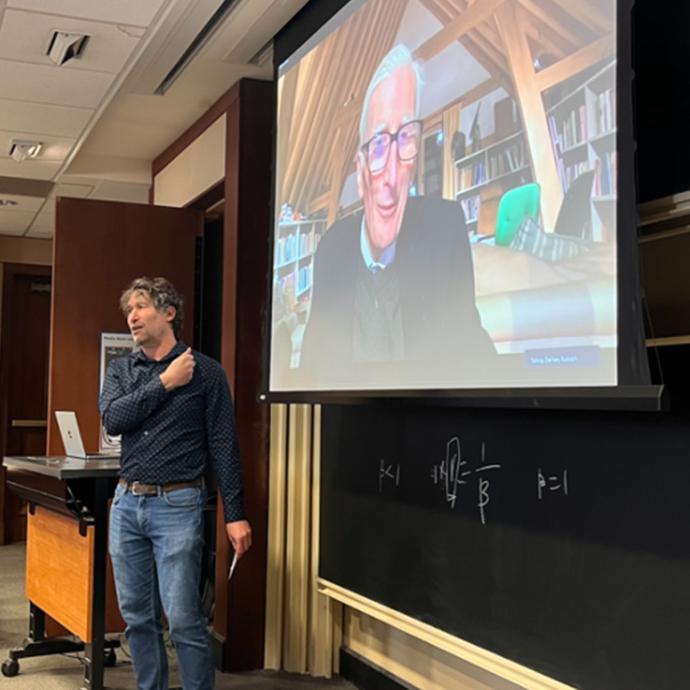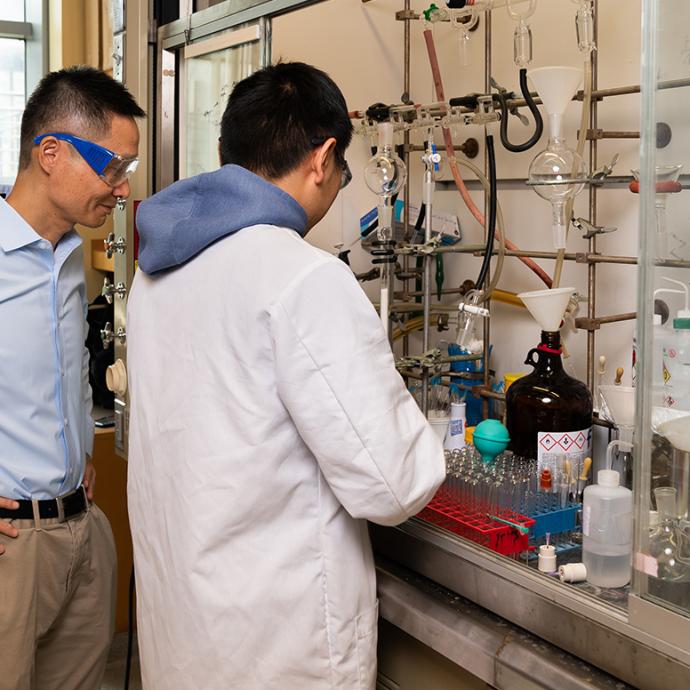Schools of fish, colonies of bees, and murmurations of starlings exhibit swarming behavior in nature, flowing like a liquid in synchronized, shape-shifting coordination. Through the lens of fluid mechanics, swarming is of particular interest to physicists like Heinrich Jaeger, the University of Chicago Sewell Avery Distinguished Service Professor in Physics and the James Franck Institute, and James Franck Institute research staff scientist Baudouin Saintyves, who apply physics principles to the development of modular, adaptive robotics.
A swarm’s ability to flow like liquid, act in concert without a leader, and react to its environment inspired Saintyves and Jaeger’s latest creation, which they call the “Granulobot.” It can split apart, reassemble, and reorganize to adapt to its environment. And depending on its configuration, it can act like either a rigid solid or a flowing liquid.
The aggregate system “blurs the distinction between soft, modular, and swarm robotics,” says the team.
Developed in collaboration with Matthew Spenko, professor in the Department of Mechanical and Aerospace Engineering at the Illinois Institute of Technology at Chicago, the prototype is described in a paper published in Science Robotics.
Soft machines
The “granular robot” is a collection of simple, cylindrical, gear-like units, outfitted with two magnets that can rotate around the cylinder’s axis. One magnet rotates freely while a battery-powered motor drives the other. This design allows the individual units to connect magnetically and once coupled, push their neighbors and cause them to spin. The contact between each unit moves the aggregate as a whole, much like a swarm.
“The field of soft robotics is particularly interesting for applications where robots interface with humans,” says Jaeger. “You don’t want people to get hurt.” Yet the necessity for soft robotics extends beyond safety into suitability. A robot that can change shape can crawl into “nooks and crannies,” says Jaeger, or manage uncertain terrain—both useful for search and rescue, for instance.
For a robot to change shape and perform different functions, its ability to fluctuate between rigid and soft predictably and reversibly is key. Granular materials possess inherent properties that make this transformation possible. This class of materials can transition between liquid and solid behavior based on contact rather than temperature.
That transition is caused by a phenomenon called jamming, which happens when particles in a disordered, chaotic system are so close together that they push against each other, and their flow stops. Jaeger—a condensed matter physicist—describes driving on a highway: Sometimes you’re cruising along, but sometimes you hit bumper-to-bumper cars, and traffic grinds to a halt. When this happens in a granular material, says Jaeger, “it’s essentially a big traffic jam.”
Jamming can be seen in action with a brick of vacuum-sealed coffee: Break the seal and the coffee grounds can pour out. Ground coffee works so well in this regard that Jaeger used it to create a soft robotic gripper that can grasp and hold objects regardless of their shape.










 —Prof. Chuan He
—Prof. Chuan He
